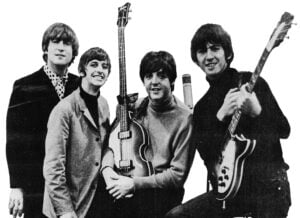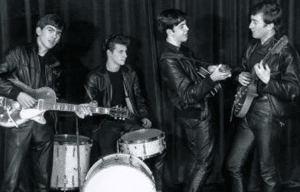10 Iconic Guitar Riffs from 1971 That Still Inspire Musicians

via POP FLIKS / YouTube
1971 was a groundbreaking year for rock music, producing some of the most memorable guitar riffs in history. These riffs have stood the test of time, influencing generations of musicians and reminding listeners why this era was so special for guitar-driven music. Here are ten unforgettable examples from that year.
1. “Stairway to Heaven” – Led Zeppelin
Jimmy Page’s iconic riff in “Stairway to Heaven” begins softly with an acoustic guitar before building into a powerful crescendo. The intricate progression captivates listeners and showcases Page’s technical skill.
The song became a blueprint for blending rock and folk influences, with the riff serving as a centerpiece. It remains one of the most analyzed and emulated riffs in rock history, inspiring countless guitarists to explore fingerpicking techniques.
2. “Smoke on the Water” – Deep Purple
Ritchie Blackmore’s unforgettable four-note riff in “Smoke on the Water” became one of the most recognized guitar lines ever recorded. Its simplicity and power made it an anthem for aspiring guitarists.
The riff’s raw, unpolished tone perfectly matched the song’s narrative about a fire at a music venue. It continues to be a favorite among beginners and professionals alike.
3. “Baba O’Riley” – The Who
While the synthesizer intro often gets attention, Pete Townshend’s guitar riff in “Baba O’Riley” is equally crucial. The power chords drive the song’s energy and set the stage for its unforgettable chorus.
The riff demonstrated how simplicity can pack a punch. Its repetitive yet dynamic nature remains a go-to example of effective rhythm guitar.
4. “La Grange” – ZZ Top
Billy Gibbons’ riff in “La Grange” combined Texas blues with rock flair. The sliding notes and gritty tone gave the song a raw, infectious groove.
This riff showcased ZZ Top’s ability to blend traditional blues with modern rock elements. Its lasting popularity highlights Gibbons’ innovative approach to guitar playing.
5. “Behind Blue Eyes” – The Who
“Behind Blue Eyes” begins with a gentle acoustic riff before transitioning into a powerful electric section. Pete Townshend’s ability to balance emotion and intensity is on full display.
The dynamic shifts within the song made it a standout track. Its combination of soft and heavy riffs created a template for many ballads that followed.
6. “Won’t Get Fooled Again” – The Who
Another entry from The Who, “Won’t Get Fooled Again” features a riff that alternates between striking power chords and melodic lines. Pete Townshend’s rhythmic precision adds depth to the track.
The song’s rebellious tone is amplified by the guitar work, making it an enduring anthem. The riff remains a favorite for those wanting to master classic rock techniques.
7. “Sweet Leaf” – Black Sabbath
Tony Iommi’s sludgy, detuned riff in “Sweet Leaf” became a defining moment for heavy metal. The riff’s heaviness set the stage for countless metal bands to follow.
The song’s dark, hypnotic tone highlighted Iommi’s creativity. His use of power chords and simple phrasing proved how impactful minimalism could be.
8. “Maggie May” – Rod Stewart
The mandolin outro often overshadows Martin Quittenton’s acoustic riff in “Maggie May,” but it plays a vital role in the song’s appeal. The riff provides a laid-back yet engaging foundation.
This acoustic line brought a folk-inspired touch to the rock world. It remains an example of how subtle guitar work can enhance a track’s storytelling.
9. “The Song Is Over” – The Who
This lesser-known track features a delicate riff by Pete Townshend that complements its introspective lyrics. The gentle guitar work supports the song’s emotional depth.
Townshend’s ability to blend intricate picking with poignant themes shines here. The riff exemplifies his range as a guitarist and songwriter.
10. “Life on Mars?” – David Bowie
While known for its piano-driven melody, Mick Ronson’s subtle guitar riff in “Life on Mars?” added texture to the song’s orchestral arrangement. The understated yet essential riff highlighted Ronson’s role in shaping Bowie’s sound.
The combination of rock and theatrical elements created a timeless classic. Ronson’s contribution remains a reminder of how guitars can elevate even piano-focused tracks.






















